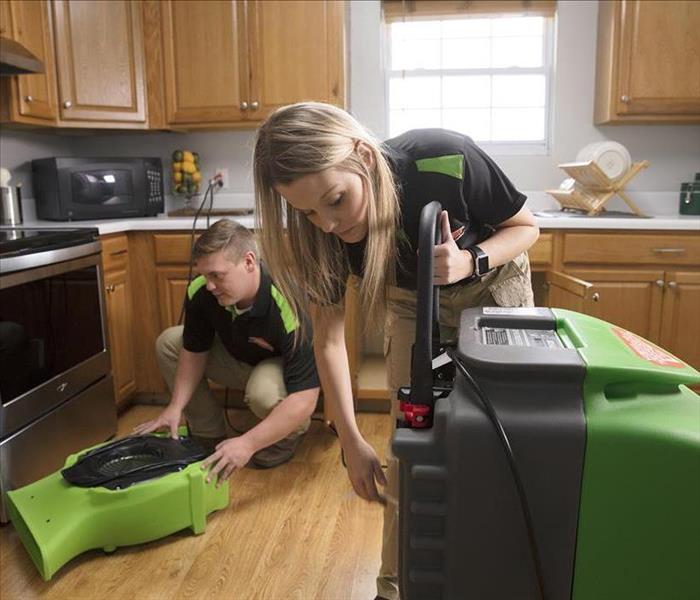Removing Moisture from Materials
11/16/2021 (Permalink)
When our Project Manager comes to a job site affected by water, they will look at two factors: type of material and the degree of wetness. They will look at the variation of each material’s ability for water to pass through the material. In contrast, the degree of wetness refers to the moisture movement by finding out the water source. The liquid will be presented in one, two, or three forms.
Surface Water
This type of liquid can be found on the material’s surface, making it easier to find since it is a liquid, visible, and evaporates. When clearing this type of liquid from a material, it is essential to physically remove the moisture by using mechanical extraction equipment to ensure you get all moisture off the fabric. Our technicians will use different airflows, which help moderate the temperature and humidity, which helps evaporate the remaining water.
Free Water
You will find moisture within the material when approaching free water, but it hasn’t bonded with the chemical properties. The moisture can be found in cavities, open pores, and other air spaces within these materials. What’s different about free water compared to surface water is that you can see the moisture when the material is darkened. Similar to surface water, free water can be evaporated. When extracting this type of water, you will want to use lower humidities and warmer temperatures. By keeping it monitored, you are ensuring that you are maintaining the rate of evaporation.
Bound Water
Bounded water is different from the other types because this is when the liquid has bonded with the material’s chemical bonds. When trying to extract the moisture from the material, you will have to release it before evaporating. Controlling the airflow onto the fabric won’t be helpful, but it will dry fastest when it’s warmed. You must maintain the surrounding humidity very low with the liquid being chemically bonded with the material. It takes longer than the other two.
Knowing what separates each classification is just one component. Our Project Managers will know the best course of action that the technicians will carry out. This course of action will include how much of each piece of equipment will be needed to ensure the job gets done correctly.



 24/7 Emergency Service
24/7 Emergency Service
